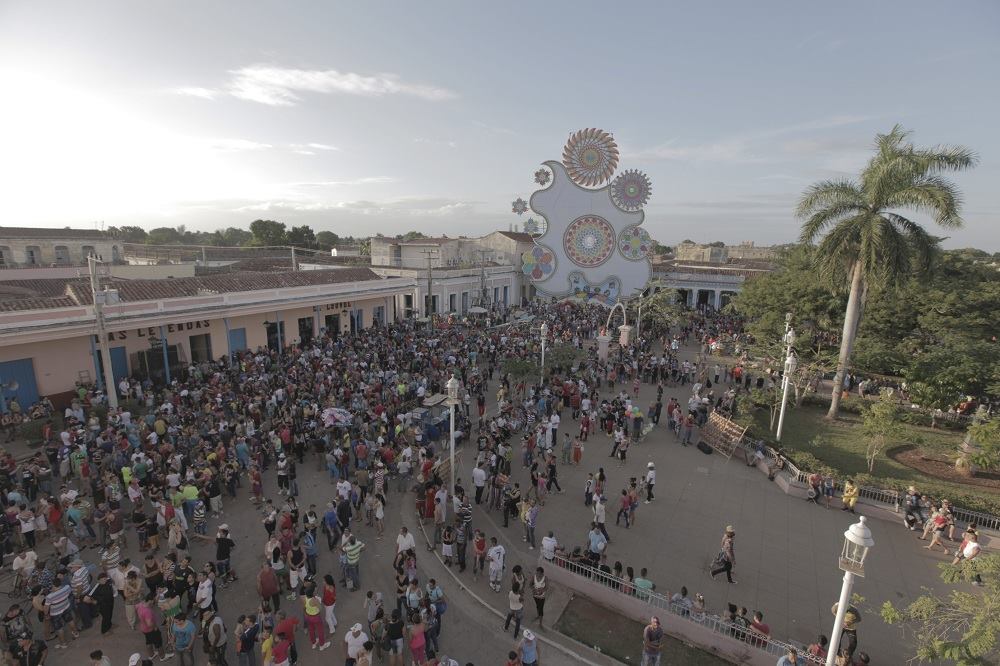Another Cuban tradition makes it into the select list representative of Intangible Cultural Heritage, the –Parrandas- (Sprees) which are celebrated in Cuba’s central provinces (Villa Clara, Sancti Spiritus and Ciego de Ávila) now together with the –Rumba- and the -Punto Cubano- feature in this prestigious selection. This occurred during the 13th meeting of the Intergovernmental Committee of UNESCO that took place last December 1st in Port Louis, capital city of Mauritius.
It’s not common knowledge that these festivities had their origins in a mass back in 1820 in the town of San Juan de los Remedios in the province of Villa Clara. Father Francisco de Quiñones noticed that the members of the congregation preferred sleeping rather that attending the mass, in order to solve this he used the local youngsters to wake up everyone with a maddening noise using whistles, horns and cans forcing the worshippers to go to church.

Some Spanish businessmen who had emigrated mainly from the Canary Islands saw the attractiveness and graciousness of the incipient celebrations and they turned it into a good opportunity to increase their sales which in turn also boosted the popularity of these festivities. With the passage of time father Quiñones’ trick grew stretching to nearby towns and currently they are held in 18 territories across the three provinces.
There isn’t a specific date for the –Parrandas- but they usually take place in the last quarter of the year, they occur during one whole day in which no one sleeps. Two sides or neighbourhoods prep up during the whole year to have a friendly clash in the night of the showdown, as part of the drama both competitors have “spies” that try to reveal any secret surprises that the rivals may have.
The –Parrandas- are made for the people by the people, their implication is key since the conception stage until the parade. There is dance, orality, fireworks, vestry, music, costumes and different characters represented in the different parading coaches. It’s an amazing demonstration of imagination and creativity to reinterpret and recreate events and tales through images, lights and colours of great originality. It’s pure adrenalin, the conga rhythm is extremely contagious with the ringing of bells, drums and trumpets and you can barely see the sky as constant firework explosions have you running for cover back and forth.
If you decide to attend the Remedios Parrandas you’ll have various lodging options; –Cayo Santa María– up north in Villa Clara is a paradisiac key where you won’t run out of sun, sand and crystal clear beaches. Once there you can lodge at one of the excellent Meliá hotels such as the Meliá Buenavista, Meliá Cayo Santa María, Meliá Las Dunas, Sol Cayo Santa María or the newly unveiled Paradisus Los Cayos.
On the other hand whether you decide to participate in the Guayos Parrandas or to attend the Chambas Parrandas you’ll also have heavenly retreats full of tropical vegetation and wonderful beaches, the fantastic choices of Meliá hotels are the perfect complement when looking for lodging. In the northern part of these provinces lie the keys of Cayo Coco and Cayo Guillermo.
In Cayo Coco Meliá offers you the Meliá Cayo Coco, the Meliá Jardines del Rey, the Tryp Cayo Coco and the Sol Cayo Coco hotels.
In Cayo Guillermo Meliá displays you the possibility to stay at the Meliá Cayo Guillermo or at the Sol Cayo Guillermo hotels.

